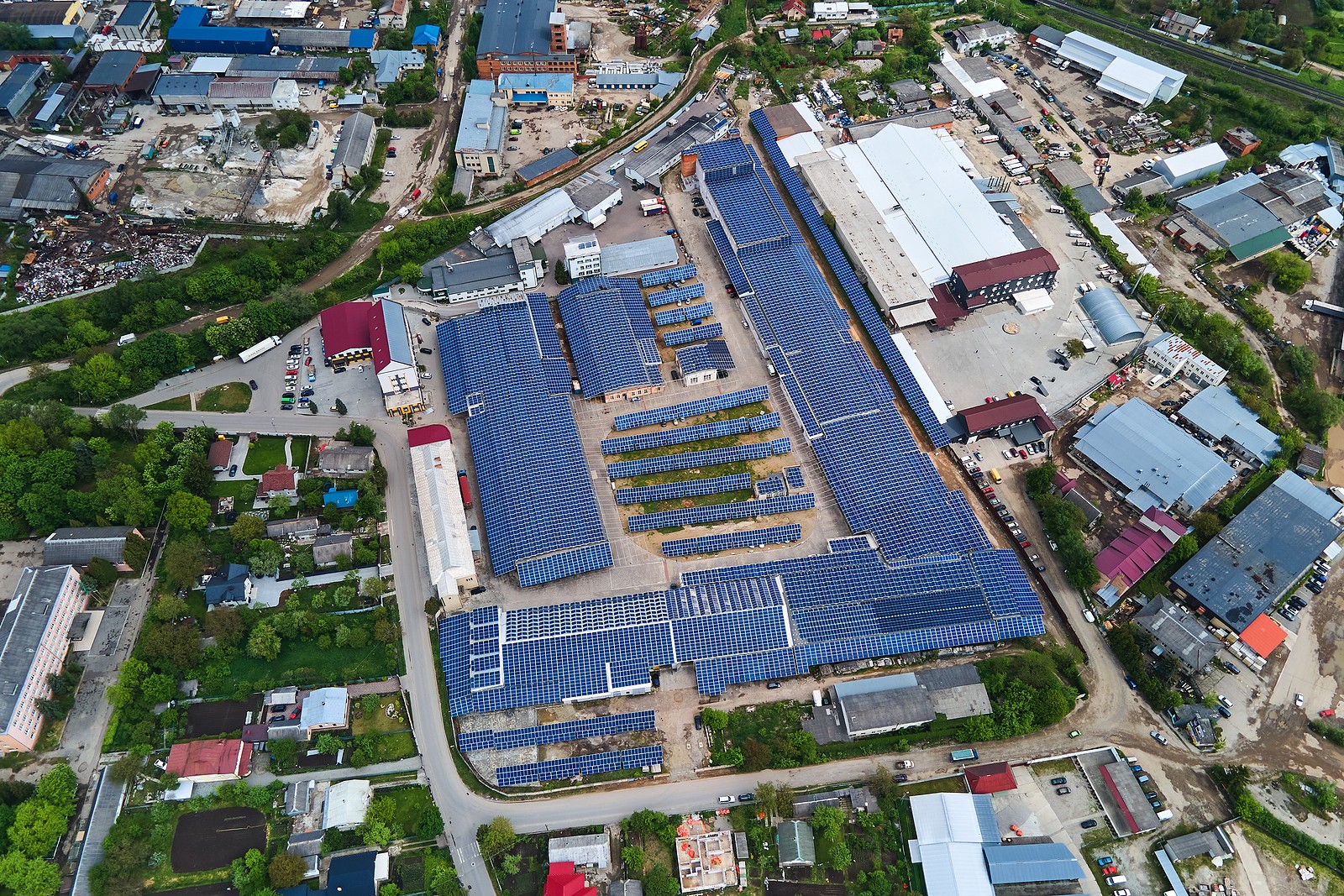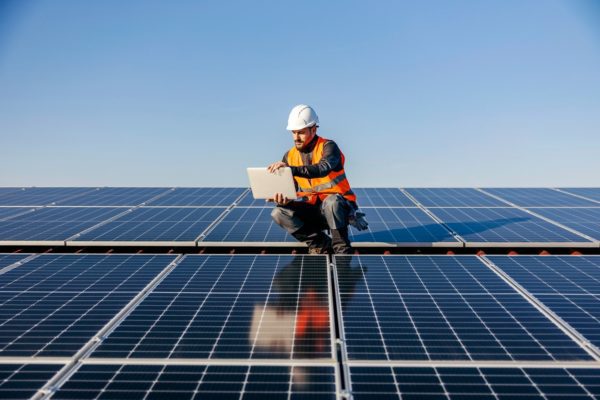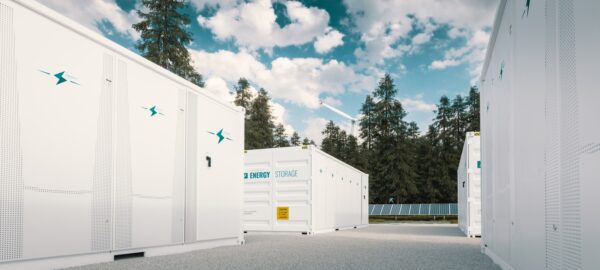
When was the last time you actually tried to read your energy bill? Never? Well, you are not alone. Many commercial building owners only check the bill’s total amount and pay it. Some also try to understand it but fail to do so, not knowing how energy costs are calculated. Don’t worry! We are here to help you read your bill. When you understand your electricity bill, you can make smarter decisions that reduce your business cost.
Let’s learn what is present on your bill and how it is calculated. Also, we will discuss how you can reduce the overall energy cost with commercial solar energy systems.
How To Understand Your Commercial Electric Bill?

Every month you receive a commercial electric bill. After seeing it, you probably wonder why your bill is so high. What are the things causing this hike? How can I reduce my energy cost? These are some common questions that usually come up in your mind.
An energy bill is made from the individual line items that add to the total bill. So, let’s learn about the line items:
KWh
Kilowatt-hours or KWh is a unit measurement. You divide the number of watts or power any electric item uses for an hour by 1000 to get this figure. The number of units of energy you use monthly is indicated in Kilowatt-hours (KWh) on an energy bill.
For instance, suppose your rate is $0.010 for each KWh. And you have a central air conditioner that uses 3,500 watts per hour. If your air conditioners operate for 12 hours every day, they will use 42,000 watts daily or 42 KWhs. This will cost you $4.20 per day or $125 per month.
Knowing your kWh usage allows you to determine ways to use less energy, leading to a lower total bill. By understanding how much you pay in cents for every KWh, you can also find an energy supplier that offers a better rate.
Supply Vs. Delivery
Another thing you need to learn is supply charges and delivery. Generally, any commercial electric bill is divided into two parts:
Delivery
These rates are fixed and specified by your local utility company. Delivery rates involve the transportation of the energy from the supply source to your organization. The maintenance of natural gas pipelines, power lines, infrastructure, and transformers is included in your delivery charge payments. The following is the breakdown of your basic delivery charges:
- Customer charge: This includes all the customer service-related elements like billing, meter reading, and administration cost.
- Transition charge: This is the utility company’s cost to meet the state’s legal requirements.
- Distribution energy cost: These are the charges of delivering energy from its source to your location. To distribute the electricity, suppliers use power lines and electrical substations.
- Transmission cost: This charge is for delivering electricity from energy-supplying facilities like natural power, gas, or coal plants to the utility’s electric supplier.
- Renewable energy charge: It’s a state nonprogrammer charge to help the state cover renewable energy measures.
- Energy conservation charge: This cost is related to the government program that helps to pay for utility energy efficiency measures.
- Distribution demand charge: This is sometimes not present in your bill. You can only find it in the bills of buildings that have certain bill sizes or pay time-of-use rates. It’s calculated on the highest 15-minute average usage recorded through the energy meters in a billing period.
Supply Charges
Although delivery cost does not fluctuate no matter how much energy you consume, supply charges vary greatly. Supply charges indicate how much energy you use, and what is the rate of each KWh?
In many states, unfortunately, businesses don’t have the option to choose the power supply. Therefore, you don’t have any option and have to pay whatever rate you got.
But, deregulated utility market is present in several states. This means that you can decide between different suppliers to get the best option. Hence, it creates an opportunity to take advantage of the competitive market. In fact, if you are using the best technology that saves energy, you can benefit from the lower rate and reduce your cost. Lowering the cost of each KWh will cut down the overall business cost.
Use Solar Energy for an Affordable Energy Consumption

Commercial solar energy systems can’t lower your energy bills, but they can completely replace them. It’s not only great to make energy affordable, but it is also great for the environment. Solar energy can also help you save money in several ways besides saving you from paying electricity bills.
When considering investing in commercial solar panels, it’s important to think about long-term savings. You may notice your savings immediately after installation, but your savings will increase over time. Your electricity bills depend on two major factors:
- The rate at which utility suppliers charge you energy
- How much electricity do you use
If your business uses grid power, reducing costs is significantly hard. The only thing you can do is to use the machines less, which is obviously, not possible in most cases. However, installing solar panels can reduce your electricity bill by slashing the rate to less than 8 cents per KWh. This is much lower than the cost you get from most electricity suppliers in the country.
While it’s true that you need to pay a hefty amount for the solar installation, the solar will cover the cost in a few months or a year, depending on the number of solar panels you have installed. Additionally, keep in mind that the grid energy rates are always raising. The cost of grid energy increases by 2.79% every year on average in the US. Not only is this, but the Energy Information Administration (EIA) expects it to increase by 2.54% in 2023. This will lead to the national average of 17.0 cents per kWh.
On the other hand, if you go solar, you can fix the electricity cost of your business permanently. So, if solar costs you 8 cents per kWh in 2023, it will stay the same for years to come. Therefore, opting for solar energy is an ideal way to control your electricity cost rather than stop using electricity. This also helps businesses avoid increasing their product or service prices, which they do when they get the new electricity rate.
How to Save More Money When You Go Solar?

You can significantly lower your energy bills when you start using solar energy. Here is what you need to do.
Use Less Electricity
If you use less electricity coming from the grid, you have to pay less. For this, you can look into things operated through electricity from the main source rather than solar. You can connect it with commercial solar energy systems or use them less. Also, you can opt for energy-efficient machinery, LED lighting, and appliances that reduce the overall energy bill.
Opt for Battery Storage
Consider installing a battery to store the excess electricity your solar panel’s products that your commercial building doesn’t use immediately. This way, you can utilize the stored electricity if your solar panels don’t generate energy at any point due to night or not having a sunny day.
While you may have to pay more upfront costs for a storage battery, using stored energy will help you cover the cost by saving money on utility bills.
Shift Energy Usage to Solar Hours
If you don’t want to install the battery, you can run your business in the morning or evening when there is plenty of sunlight to generate electricity. Your solar panels will generate this way, whatever amount of total energy you need.
Consider Net Metering
Net metering is an ideal way to control energy usage in your commercial building. It allows you to transfer the extra electricity your solar panels generate to your electric grid. In this case, you will get credit from your local utility company for the extra energy you have provided them. This will help you reduce your monthly electricity bill if you use the energy from the rid in future.
Reach Out to Coldwell Solar to Reduce Your Energy Bill
Coldwell Solar offers you quality commercial solar panel systems installation. We can help you lower your commercial energy bills and save business costs in the long run. The payback timeline, net metering, and incentive businesses enjoy with solar power and our services have made us stand out in the market. Reach out to our experts today to find the best possible financing solutions for your business. We offer cash purchases, financed purchases, Power Purchase Agreements (PPA), and lease-to-own.

